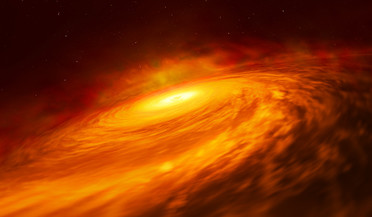 19 February 2020
Molecular oxygen detected for the first time in another galaxy
19 February 2020
Molecular oxygen detected for the first time in another galaxy
... through gravitational and frictional forces to millions of degrees while radiating enormous amounts of energy as it is swallowed up out of sight. Quasars and AGN are also synonymous with powerful jets, which can blast outwards at opposite ends from...
 12 July 2019
Hubble uncovers black hole that shouldn't exist
12 July 2019
Hubble uncovers black hole that shouldn't exist
... strong gravitational pull, subsequently emitting lots of light and producing a brilliant beacon called a quasar. “The type of disc we see is a scaled-down quasar that we did not expect to exist,” Bianchi explained. “It’s the same type of disc we see...
 27 January 2017
Distant quasars help refine the rate of the expanding Universe
27 January 2017
Distant quasars help refine the rate of the expanding Universe
... measurement by the H0LiCOW collaboration using gravitationally-lensed quasars, contradicts that made using other methods and the... measured the Hubble constant by measuring light from distant quasars that is bent by massive galaxies stationed in the ...
 31 August 2015
Markarian 231 quasar built around two twirling black holes
31 August 2015
Markarian 231 quasar built around two twirling black holes
... discovery in the Markarian 231 galaxy, located 600 million light years away from Earth, suggests that a quasar in it is actually the product of two black holes, of vast difference in size, that perform a peculiar gravitational twirl around...
 July 2021
Arecibo - an astounding legacy
July 2021
Arecibo - an astounding legacy
... of Earth! One important result of the joint Arecibo-RadioAstron work was the observation that the temperature of quasar 3C 273 is so high that it forces astronomers to reconsider the synchrotron emission mechanism invoked decades ago to account for...
 April 2024
Rotation in the Universe
April 2024
Rotation in the Universe
...particular, his suggestion that groups of objects with different red-shift characteristics, seen in association with some quasars, would make significantly more sense if their emissions had a rotationally-induced red-shift component. Arp’s suggestion...